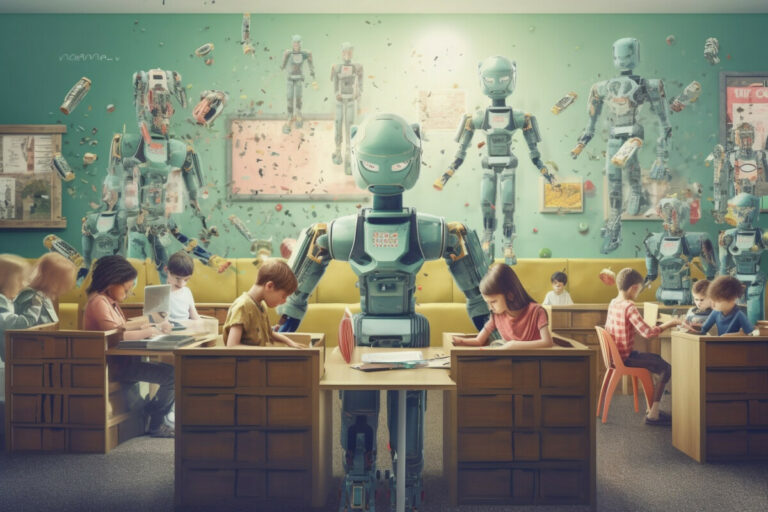Introduction
Artificial intelligence (AI) is infiltrating every aspect of our lives, from shopping recommendations to self-driving cars. Its latest frontier? Education. But is AI in education an excellent tool for progress, or does it present a troubling precedent? This question has garnered significant attention, spurred by an incident at Texas A&M University.
AI in Education: A Brief Overview
AI has steadily been finding its place in education. It’s been used to automate grading, personalize learning experiences, and provide additional assistance to students. However, its role as a lecturer is still relatively new and not without controversy.
The Case of Texas A&M
Texas A&M University made headlines when it was revealed that an AI system known as ChatGPT was utilized as a professor, unbeknownst to students. This decision led to a wave of discontent and debate over the ethics of AI in teaching.
The Deception: A Robotic Professor
Students at Texas A&M University were shocked to learn that their professor was not a human, but an AI model. The university used ChatGPT, a sophisticated AI system, to conduct classes and assess students’ work.
Why the Uproar?
The students’ primary issue was not the use of AI per se, but rather the lack of transparency. They were not informed that their professor was an AI model. This revelation led to claims of deception and raised concerns about the ethical implications of using AI in such a capacity.
Ethical Implications of AI in Education
The Texas A&M case brings several ethical questions to the forefront. Can AI truly replace human teachers? Is it fair to use AI to evaluate students without their knowledge?
AI vs Human Teachers
AI undoubtedly has the ability to process and analyze data at speeds far surpassing human capabilities. However, it lacks the human touch – the ability to understand and empathize with students’ emotional states and unique learning needs. So, Ai vs Human, who’s the winner?
Informed Consent
In the Texas A&M case, students were not made aware that their professor was an AI model. This lack of informed consent presents an ethical issue. Transparency and honesty are fundamental in any learning environment.
The Role of AI in Future Education
Despite the controversy, the role of AI in education is likely to grow. The key, however, lies in how it is integrated and whether ethical guidelines are established and adhered to.
Balancing AI and Human Interaction
The Texas A&M case offers a valuable lesson in balancing AI and human interaction in education. AI can be a useful tool, but it should not replace the human element that is critical to a quality education.
Setting Clear Guidelines
To avoid future controversies, it’s imperative to establish clear guidelines regarding AI use in education. These should cover transparency, informed consent, and the limits of AI in the educational sphere.
Conclusion
The Texas A&M incident underscores the need for a delicate balance between leveraging AI’s potential in education and ensuring transparency and ethics. As AI continues to evolve and permeate more areas of our lives, it’s clear that its integration into our education system requires careful thought, stringent guidelines, and a respect for the human element that forms the backbone of education.
FAQs
1. Why was there controversy about AI at Texas A&M University?
The controversy arose when students discovered that their professor was an AI model, ChatGPT, and they hadn’t been informed about this beforehand.
2. What are the ethical implications of using AI in education?
There are several ethical implications, such as the need for transparency and informed consent, and the question of whether AI can truly replace human teachers.
3. How might AI be used in future education?
AI is likely to play an increasing role in education, potentially automating grading, personalizing learning experiences, and providing additional assistance. However, it should complement, not replace, human interaction.
4. What lessons can be learned from the Texas A&M case?
The incident highlights the importance of balance between AI and human interaction, the necessity of transparency, and the need for clear guidelines regarding AI use in education.
5. Is AI capable of replacing human teachers entirely?
While AI can analyze and process data faster than humans, it lacks the ability to understand and empathize with students’ emotional states and unique learning needs, a key aspect of effective teaching.




